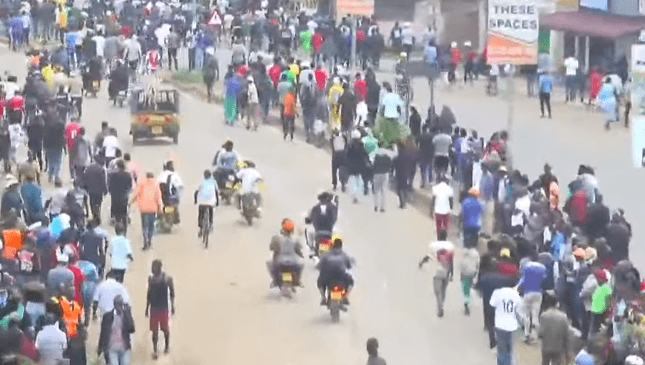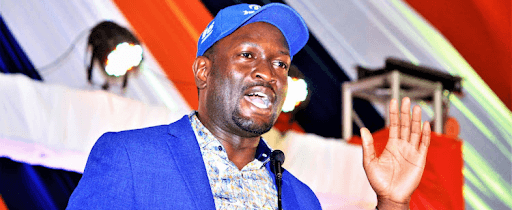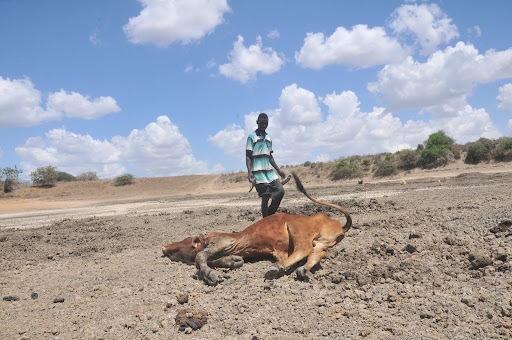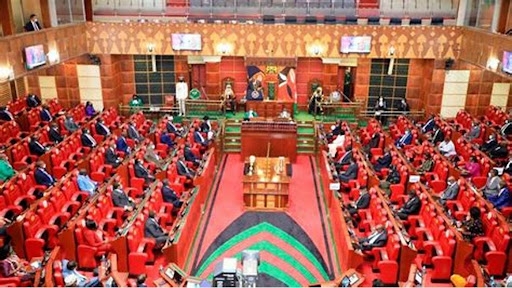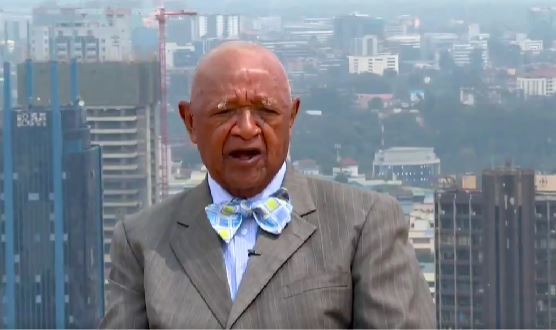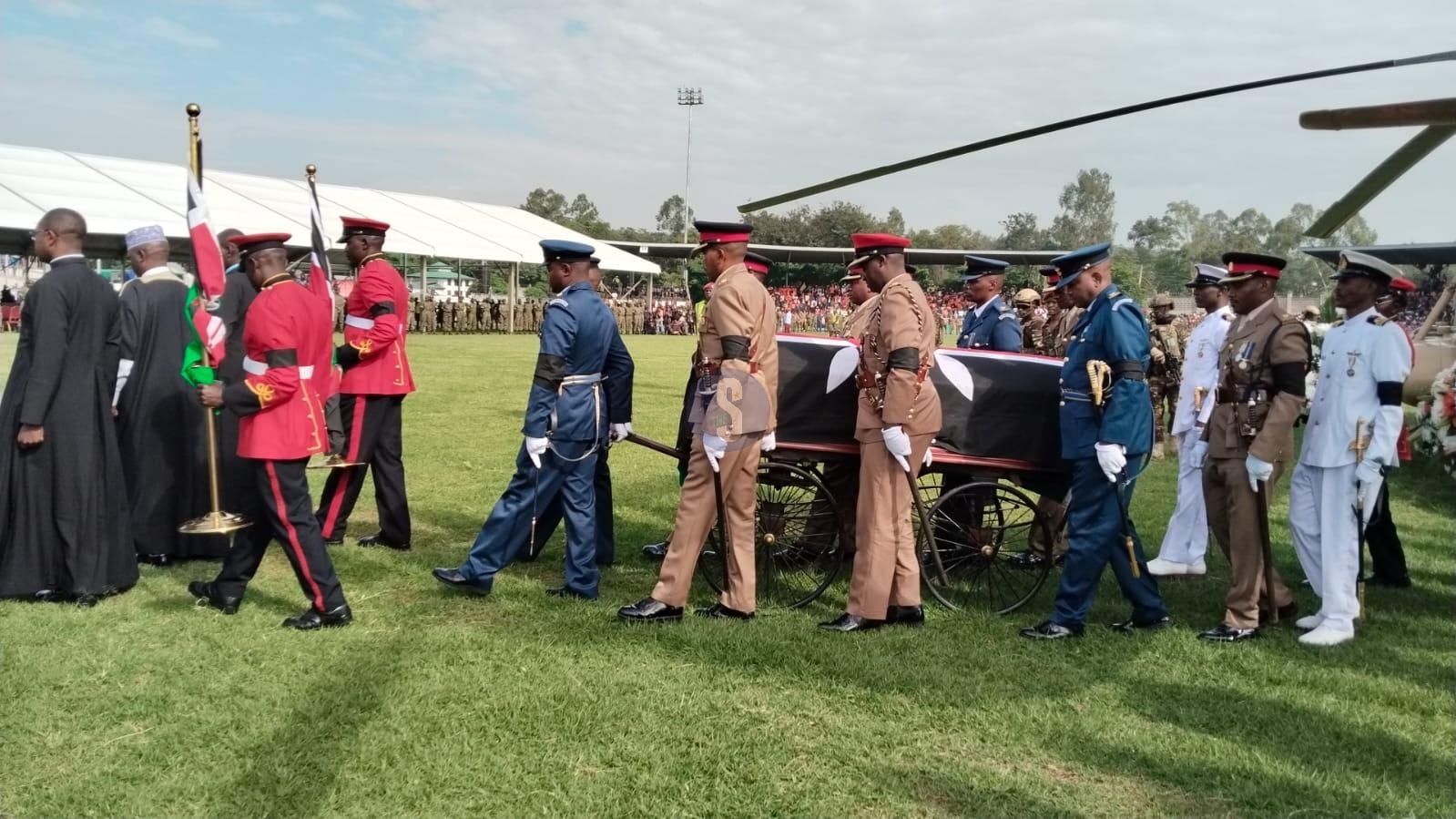
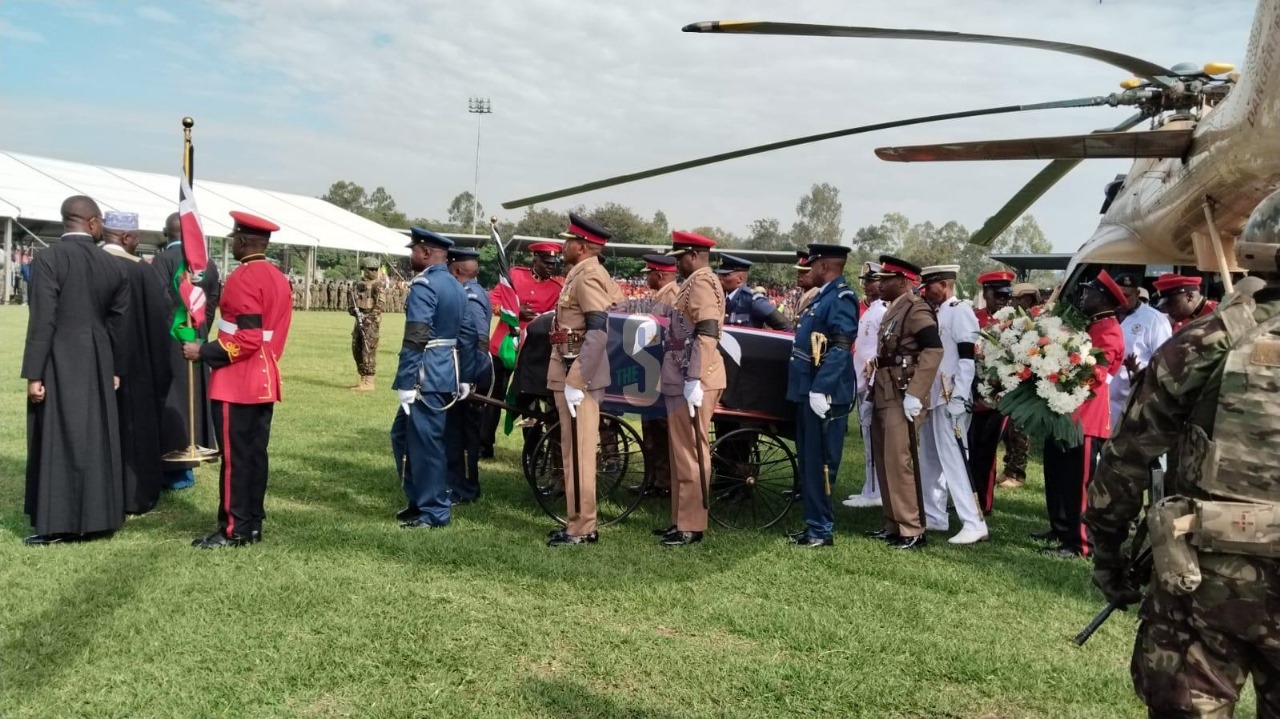 Military march in Mamboleo Grounds in Kisumu/FAITH MATETE
Military march in Mamboleo Grounds in Kisumu/FAITH MATETE
The arrival of the late former Prime Minister Raila Amolo Odinga’s body at Mamboleo Grounds, Kisumu was marked by a solemn and historic march led by Kenya’s military and security forces, capturing the gravity of the moment as thousands of mourners watched.
Moments after being airlifted from Kisumu International Airport aboard a National Intelligence Service (NIS) chopper, Raila’s casket was received by military personnel at the center of the grounds.
The Kenya Air Force aircraft — a Leonardo C-27J Spartan — bearing the call sign ENIGMA01, transported Raila’s body from Nairobi’s Lee Funeral Home to Kisumu International Airport, where it landed at about 7:30 a.m.
The code name was chosen in honour of the veteran politician often described as Kenya’s “political enigma.”
Dressed in full ceremonial uniform, the officers carried out a choreographed reception that underscored the national stature of the man widely referred to as “Baba.”
The casket was first transferred to a black ceremonial wheeler, with the military and Kenya Police Service coordinating the delicate handover.
Soldiers and police officers lined the path, saluting as the casket was carefully positioned.
At the front, Kenya Air Force officers harnessed themselves to pull the wheeler, while police officers flanked the sides, ensuring that the casket remained steady as it began its slow journey across the field.
Leading the march were members of the Kenya Army, some holding the national flag aloft.
Ahead of them, religious leaders walked holding the holy books, offering prayers, while carrying white flowers symbolising peace and remembrance.
The Kenyan Navy followed in tight formation, their march steady and deliberate, a rare public display of all branches of the defense forces moving in unity.
The coordinated presence of the Army, Air Force, Navy, and Police painted a picture of national solidarity.
It was a march of honor that transcended politics, representing the country’s collective farewell to a statesman whose influence had stretched far beyond his Luo Nyanza base.
Surrounding the formation, the sea of mourners erupted into chants, whistles, and trumpet calls.
Many waved the national flag, while others held green twigs – a sign of mourning and unity.
The atmosphere carried both grief and pride, as the people of Kisumu and Kenyans at large witnessed a moment that will be etched in the country’s history.
As the wheeler reached the designated platform, the march came to a solemn pause.
The military carefully lifted the casket once again, placing it on a raised podium draped in the Kenyan flag.
The silence that followed was broken by the powerful sound of the trumpets as both the national anthem and the East African anthem were played.
The masses stood with their arms raised, holding flags high in final tribute.


